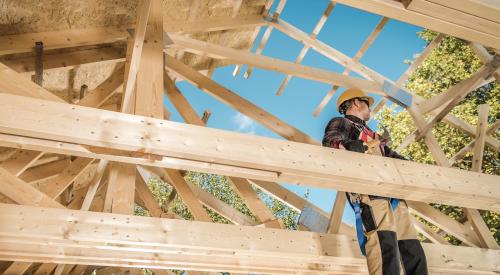Last year was one of the best years home builders have seen in a long time. By the end of this year, we’re expecting some slowing of the housing market but continued good conditions. Home production should equal the 1998 total, and our forecast calls for 862,000 single-family home sales.
Faced with such good prospects, some might think home builders haven’t a care in the world. The fact is that this prolonged economic expansion is shaping up to be something of a double-edged sword.
Extremely low unemployment translates into very tight labor markets. Meanwhile, strong demand for new homes has led to a supply/ demand imbalance in markets for certain building materials, causing prices to rise for insulation, brick, cement and especially gypsum wallboard. Finally, our latest surveys of home builders have found continuing evidence of shortages of finished lots.
All of these conditions are symptoms of a rosy economic picture, but thorns in the sides of home builders.
The good news is that by applying our best management skills, we can effectively counter these problems and help our businesses negotiate the ever-changing economic tide. We should start by planning ahead.
The nation’s unemployment rate is going to remain below 5 percent both this year and next, and we can’t expect immediate relief from a labor crunch derived from a long-term supply problem. To improve our hiring prospects in the future, we need to begin working now with local high schools and community colleges to strengthen the labor pool through job-training programs. We should even go into grade schools to deliver the message early that home building is a noble profession. We need to reach out to people who never before have considered a career in the housing industry.
Of course, the building materials situation is different. We can’t exactly build new factories to boost supplies ourselves, and building our homes without the essential materials simply isn’t an option. But thankfully, it looks like we won’t have to wait too long for some relief. New factories and factory expansions will be coming on line starting this year, adding production capacity and gradually evening out supply/demand imbalances.
Shortages of finished lots must be addressed at the local level. Innovative land-use methods like those emphasized in NAHB’s Smart Growth Strategy can help. In particular, I’m referring to efforts to build infill housing in existing urban markets, removing regulatory barriers to take advantage of vacant lots as well as lots in desperate need of redevelopment.
NAHB recently embarked on an important initiative with the nation’s mayors and the Department of Housing and Urban Development for the specific purpose of building homes in American cities. Our partners in this effort have promised to do their part to reduce barriers to the construction and rehabilitation of urban housing.
Amid this period of economic prosperity, now is the time for home builders to shine as business managers. There is no shortage of concerns, but the forecast for housing remains upbeat. We can and should take advantage of this era of historically high consumer confidence, favorable financing terms, healthy job and income growth and strong home buying activity to build a strong foundation for the future, and do what we can to ensure a more plentiful and skilled work force in years to come.
Also See:
Mainstreaming Green Building












